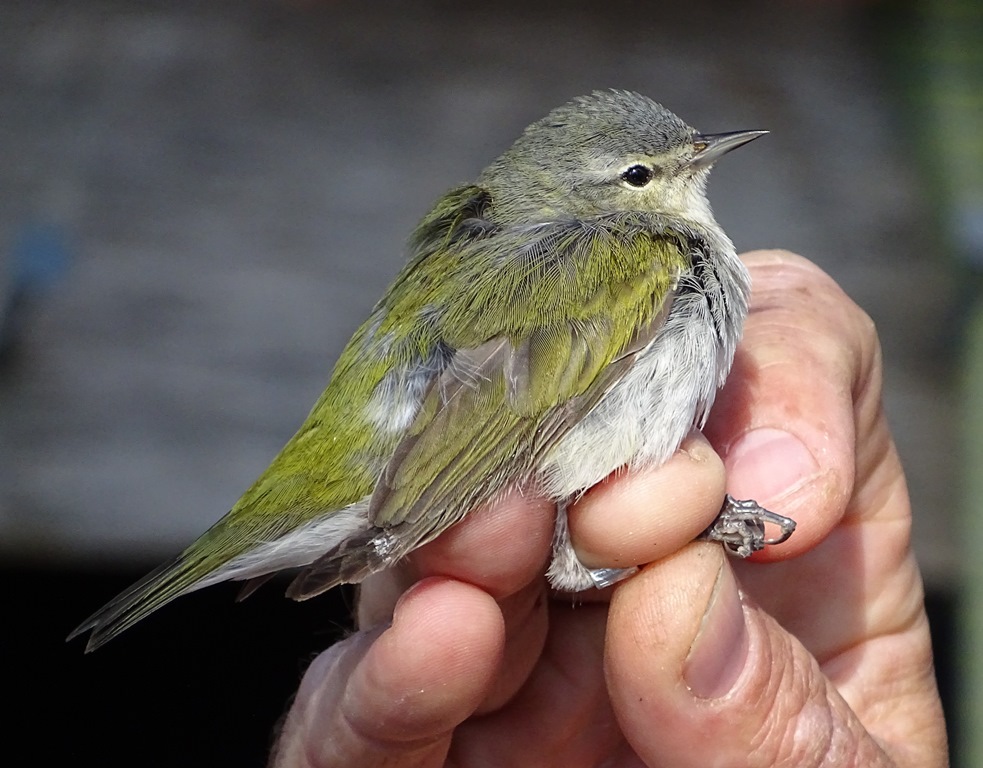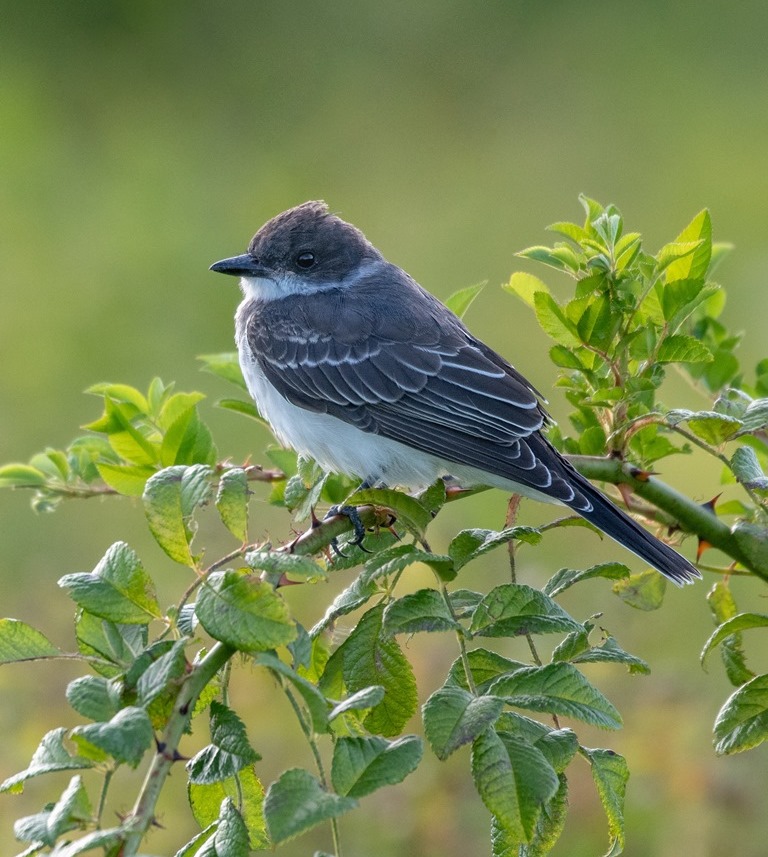I enjoy seeing the brilliant red and black plumage of a male Scarlet Tanager and hearing the ascending buzzy song of the Northern Parula as much as anybody else in spring. But what’s been the biggest draw for me are the fascinating life histories of these birds. It’s the reason I get up before dawn, forego a reasonable breakfast, and embrace sleep deprivation in the month of May!
What interests me the most about migrants is how they live before they arrive in Massachusetts and, in some cases, after they pass through.
As I thought about spring migration at the sanctuary last year, two species came to mind immediately: the Tennessee Warbler and the Eastern Kingbird. Both live very differently now than at other times of the year.
Last May I was fortunate to see and hear several Tennessee Warblers at Wellfleet Bay.

The song of this species starts like a typical warbler song, but quickly becomes much faster, increases in pitch, and finishes like an urgent alarm. One particularly obliging bird sang frequently from the south side of Silver Spring on the morning of May 31 (a later than average arrival date). The loud and distinctive song was discernible from the chorus of migrants that chose this location to rest and feed for the day.
Tennessee Warblers breed in the boreal forest from southeast Yukon to Nova Scotia and parts of northern New England. During the breeding season they feed mostly on insects. One of their preferred foods is the caterpillars of the Eastern Spruce Budworm moth, a plain brownish species of the genus Choristoneura. Eastern Spruce Budworm moths are prone to periodic outbreaks and during these times the caterpillars can be abundant. The caterpillars feed mostly on Balsam Fir and White Spruce and can decimate vast tracts of forest during outbreaks (the most recent outbreak defoliated more than 7 million hectares of forest in Quebec). Tennessee Warbler numbers increase in response to these periodic outbreaks, as do Cape May and Bay-breasted Warblers.
When wintering in the tropics, the Tennessee Warbler, a drab greenish-gray bird, switches from bugs to primarily fruit. But it also subsists on nectar (and some insects). In Central America it has been observed “stealing” nectar from the flowers of Panama Queen (Aphelandra sinclairiana). The warbler pierces the base of the flower bract with its fine-tipped bill and takes nectar without returning the favor through pollination!
Tennessee Warblers have a different social life on their wintering grounds where they’re quite gregarious. During a trip to Nicaragua in 2008, I was mesmerized by a flock of fifteen that had concentrated in and around a fruit producing tree in the country’s highlands. In twenty minutes I observed all fifteen birds dart in and out of the tree for a meal. The number of Tennessee Warblers I saw visiting one tree exceeded the number of individual birds I had observed in Massachusetts in the previous five years!
Then there’s the Eastern Kingbird, which usually arrives in Massachusetts at the beginning of May. Last year we were graced with the presence of an early arriving kingbird at the sanctuary on April 16.

Known for their highly aggressive behavior during the breeding season, Eastern Kingbirds are extremely territorial and do not tolerate the presence of other Eastern Kingbirds at the outset of the nesting season. In addition, they frequently challenge much larger species (e.g., crows and hawks) that get too close to an active nest.

These birds lead completely different lives during spring migration and while they are wintering in the tropics. They form flocks and travel in groups while migrating in spring. North of Mexico, it is not unusual for this species to form flocks of up to a dozen birds. Years ago, while birding with a group at Cape May, New Jersey in early May, I saw a flock of twenty Eastern Kingbirds alight on nearby trees during the morning flight at Higbee Beach. This species is believed to be a day time migrant and we were lucky to see such an unusually large flock of birds at this famous coastal migrant trap.
While wintering in the tropics, Eastern Kingbirds form even larger flocks and move about in search of fruit. This social and cooperative behavior might be surprising to anyone who has observed an unsuspecting American Crow wander too close to a kingbird nest here in Massachusetts!
Tennessee Warblers and Eastern Kingbirds may not have the same visual appeal and allure as species like Magnolia Warblers, Indigo Buntings, and Rose-breasted Grosbeaks. But when I hear the two or three part staccato song of the Tennessee Warbler or the excited and stuttering wheeze of the Eastern Kingbird in May, I think about their winter experiences in places like Panama and Colombia and the changes they embrace with the arrival of spring.
This post was contributed by Wellfleet Bay special programs coordinator Jim Sweeney.


